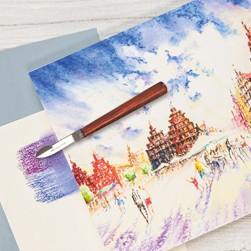
Are soft pastels used for drawing or painting? You can do both with soft pastels because the rectangular shape of the pastel sticks allows you to draw lines as well as colour in areas. This blurs the boundary between drawing and painting.
You will notice it immediately on very gentle strokes: Applying soft pastels is a very spontaneous process and the colour applied can be easily blended. This is because the pigments in a soft pastel are only minimally compressed and the soft pastel contains an extremely low percentage of binders. Soft pastels can create such flowing and soft gradients like no other drawing or painting mediums.
Faber-Castell soft pastels are available in two lengths: the standard and the mini format.
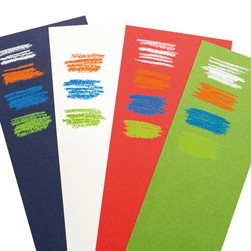
Not all papers are equal. So what is the right kind of paper for soft pastels? Textured, rough-grained papers that allow pigments to stick well to their surface offer the optimal adhesion. Smooth papers are less suitable for this. When starting out, try not to make things too difficult for yourself and choose special papers available in shops designed for pastels. Such papers offer the best possible surface and give you the freedom to fully concentrate on drawing.
Once you become slightly more familiar with handling pastels, you can also try using watercolour paper, canvas, pasteboard or wood as a substrate. Always make sure that the substrate used is acid-free in order to prevent the unpleasant yellowing of your picture.
Would you like to experience a firework of brilliance? Using soft pastels in combination with coloured papers lets you experience this in a blink of an eye! You can create stark contrast by drawing on dark-coloured papers, whereas doing so on brightly coloured papers produces gentle blends of colours.
It's time to test things out! Combining the same pastel colour with papers in cool, warm or neutral tones will result in very different colour combinations, thereby significantly influencing the character of a picture. We recommend having a strip of the coloured paper beside your drawing for testing purposes. On this strip of paper, you can test out whether you will get the colour tone you want.
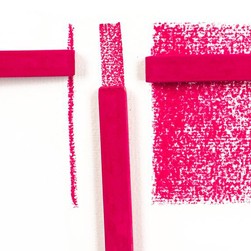
The soft pastels were not arbitrarily given a rectangular shape. The edges and flat surfaces offer you many different ways to use the pastels. You can use the tip and edges to draw fine to medium lines. To draw thick lines or colour in an area, use the wide side of the pastel for the best results. Altering the pressure intensity is another way you can vary how you use the pastel. By exerting more or less pressure, you can increase or decrease the saturation of the colour applied respectively.
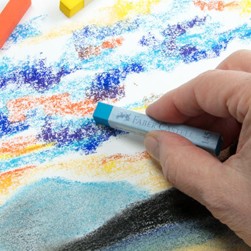
You will immediately fall in love with this: blending pigments into beautiful gradients and mixes of colours. When painting with pastels, you come into direct contact with the colour because it is typically blended using a finger. However, you can also use a blending stump, a rag or other materials to do so. Always blend colours from a lighter area towards a darker one.
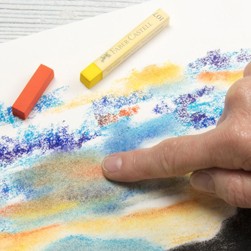
Mix soft pastels directly on the paper. Apply colours beside and over each other and blend the layers with your finger. If the blend still does not match what you want, you can further refine it with more colour layers. It is advisable to use fewer colour shades in the beginning, because a blend of many colours can quickly turn into a shade of grey.
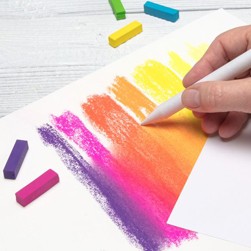
Creating colour gradients is a forte of soft pastels. They can create gradients with such flowing and painterly quality like no other drawing and painting mediums.
Apply the colours you have selected for the gradient beside each other. Then blend the colours together only at their interfaces, preferably using a blending stump. The paper stump's tip allows you to work on small areas as well. A simple application technique that produces spectacular results!
Good to know: A blending stump is made of paper rolled tightly together and can be cut to size using a cutter or sharp knife. Blending stumps are available in various thicknesses.
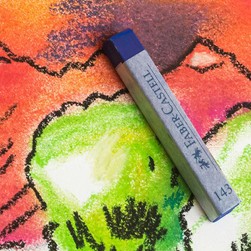
You can of course use black to darken a colour. But try using a complementary colour to do so. On the colour wheel, this is the colour opposite the colour you chose. In the example depicted, blue and orange are opposite each other. When you layer these two colours over each other, you get a shade of grey. You can vary the shade of grey by adjusting the ratio of the two colours.
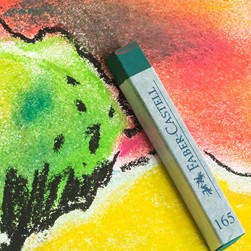
Blending a colour with white is a great way of lightening it. Likewise, you can also try using other brighter shades of colour. Depending on the shade of colour, you will get mixes with a warm or cool character.
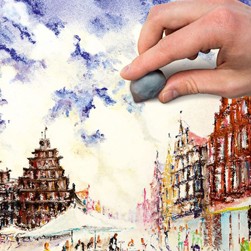
The art eraser is something you truly cannot do without! The soft rubber mass can be kneaded into any shape you want and therefore be used for correction on small spots or larger sections. When dabbed on the desired area, the art eraser absorbes loose pigments by binding them to the rubber mass.
The art eraser offers you another way of brightening colours and correcting parts of a picture. And that's not all it can do: use the art eraser to remove pigments from a picture with the help of a paper edge or a stencil. This allows you to create bright lines or areas with precision on your picture for extravagant effects; this also works on dark-coloured papers.
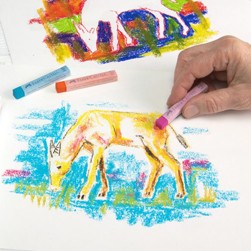
Try out new approaches! You usually draw the subject in colour on a piece of paper using pastels. And now you are going to do just the opposite: fully fill in the background with colour and leave the subject in the paper's colour. It is amazing how different the subject appears now. Test out different subjects to see which ones are suitable for this technique.
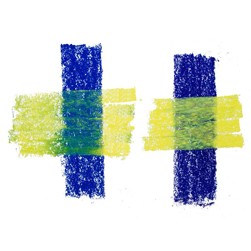
Even if you have rubbed colour pigments well onto the paper, they are only resting loosely on the substrate and are prone to being unintentionally smudged. A fixative allows you to seal and preserve your picture. The fixative is atomised and sprayed onto the picture from a distance of approx. 30 cm. After drying, it permanently protects the surface.
There are differing opinions as to whether you should use a fixative or not. Opponents criticise that using a fixative makes colours appear darker and duller. Proponents use a fixative to protect their picture as well as to allow themselves to further process their picture after the fixative has dried. The next two pages will show you how this works.
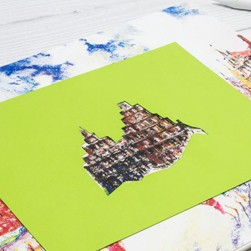
If you do not want to apply fixative on your picture for preservation, but there is an area on it you want to improve, then here is a little trick you can use. Cut a piece of paper to make a stencil in the shape of the area to be worked on. Then place the stencil on your picture and apply a fixative on the cutout. When the fixative is dry, you can apply more
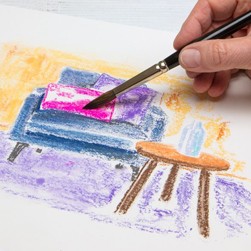
It is hard to believe, but you can use water and a brush to greatly affect how a pastel picture looks. Give this watercolour-esque effect a try! Draw your subject using soft pastels. Now take a soft brush damped with a generous amount of water and move the brush across the drawing. The pigments on the top will be absorbed by the brush and blended over the painting without messing up the original painting. Simple but brilliant!
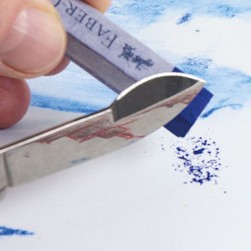
You have already met the most important helpers: the art eraser and the blending stump. But there are still more helpers to discover.
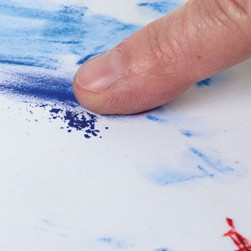
A knife or a sand paper block allows you to easily scrape pigment off a pastel. Apply the pigment directly on your picture or scrape it onto a separate piece of paper.
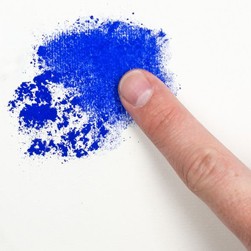
You can pick up the pigment using your finger and incorporate it into an existing drawing or blend it immediately on your picture. This is an ideal technique you can use to quickly colour in large areas or create beautiful textures.
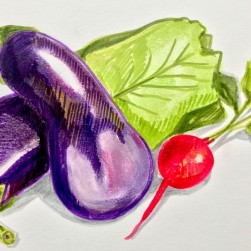
The drawing techniques we have presented offer endless possibilities for creating extravagant pastel pictures. If you are looking for even more room for variation and you love mixed media pictures, experiment with exciting combinations of other materials and tools from the Creative Studio range.
You could, for example, use the Pitt Artist Pen with waterproof ink for preliminary sketching. The interplay of soft and with the Goldfaber drawing pencil also delivers great results.